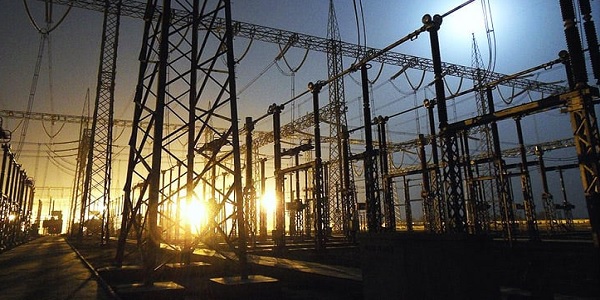India may open derivatives market for power sector next fiscal
The introduction of derivate products has got delayed over jurisdictional issues between the SEBI and the CERC and a case pending in the Supreme Court also needs to be cleared.

NEW DELHI: After prolonged delays, India may open a derivatives market for the power sector in the next financial year (FY 2022-23), allowing both power generators and consumers to enter into a futures contract and use it as a new hedging tool to mitigate price volatility and other associated risks.
The introduction of pure-play futures and options as products on the power trading platform would be a major reform initiative that would help in developing a robust and vibrant energy market.
The introduction of derivate products has got delayed over jurisdictional issues between the Securities and Exchange Board of India (SEBI) and the Central Electricity Regulatory Commission (CERC) and a case pending in the Supreme Court also needs to be cleared.
Sources privy to the development told IANS that the SEBI and the CERC have reached an understanding to allow futures trading in electricity.
The former is expected to oversee the functioning of all financially traded electricity forwards, while the latter would regulate physically settled forwards where electricity is delivered on future date at the contracted price.
"Decks have been cleared for the start of the electricity futures market in India with regulators reaching a broad understanding on how to go about while allowing derivative instruments for the market participants.
"They will still have to get concurrence of the Supreme Court that was overseeing the issue of electricity futures jurisdiction between SEBI and CERC," said an official source.
The source added that there may be further delays on account of the economic slowdown that has also impacted power demand. Also, the Covid pandemic has delayed the hearing and settling of all issues by the Supreme Court which is taking up only essential cases now.
Futures and options work best in a rising market where players need to hedge their positions to minimise losses. With expectation of a big demand growth as the economy unlocks from Covid related disruptions, the current timing is considered opportune to open the derivatives market for power.
"We are hopeful that the derivatives market for power sector may open early next fiscal. The full clearance for the futures trade could take up to two quarters after the Supreme Court dismisses the case at its next hearing.
"We have filed petitions with the CERC to become an active participant in the power futures market once it opens and launch longer duration contacts," Rohit Bajaj, Head, Business Development, Indian Energy Exchange (IEX), told IANS.
IEX is the largest power exchange in the country.
While India presents a large power market with installed generation capacity of close to 385 GW and large number of participants from both private and public sector, it is yet to offer futures trading option that is a hallmark of all mature markers.
Though electricity is available in surplus now, its trading is limited to only through spot contracts (up to 11 days) on the exchanges. Forward trading in electricity started in 2009, but the matter soon ended in court over jurisdictional issues.
"Introduction of electricity futures would be a welcome development for the power sector. For any mature market, future and options are must. This should not be seen as instruments facilitating speculation, but as one that promotes hedging and allows price discovery in medium term markets with mitigation of counter party risk," said another executive of a public sector power generation company.
Once future trading starts, power exchanges such IEX would be in a position to offer derivative instruments to the participants. This could be electricity futures with a clear delivery-based schedule (delivery at a price on future date) and other derivative instruments such as call and put options.
This will help both generators and consumers to mitigate risks by hedging their positions through derivative instruments.
The beginning of derivate instruments would also be helpful for the sector at a time when spot power prices have fallen on the exchanges and are hovering in the region of Rs 2.70-2.80 per unit due to industrial slowdown and other Covid-related disruptions. Futures market will provide such indications in advance.
Power producers can sell their perceived surplus in futures, and the consumers, who foresee higher consumption and a price rise, can buy power on the same platform.
Trading in electricity futures will also be helpful as power prices are volatile. Those who buy or sell power in the spot market will benefit directly from this. That apart, dealings via an exchange would be safe as its clearing house provides a system of guarantee that mitigates counter-party credit risk.
There is still, however, some fear that these products would concentrate the commodity with a handful of players, who could then control prices. But with low demand and a surplus situation now, this looks unlikely./IANS
Read Also : Vice Admiral Dinesh Kumar Tripathi appointed as next Chief of the Naval StaffNews Must Read
- CIL’s capex up 6.5% to highest Rs.19,840 Crores in FY 2024
- SCOPE presents SCOPE PREMIER LEAGUE
- MCL Ib Valley Washery commenced commercial operation
- HAL bags Rs 65,000 Cr tender by Defence Ministry
- PSBs' growth output superseded Private Lending firms
- Northern Coalfields Limited CMD inspects Amlohri Area
- SCOPE organizes Public Sector Day celebrations
- IOCL Final Dividend Announcement Expected at April 30 Board Meeting
- Steel Cutting Ceremony of Indian Navy held at HSL Vishakapatnam
- DIPAM declines PFC-REC debt resolution proposal for KSK Mahanadi project